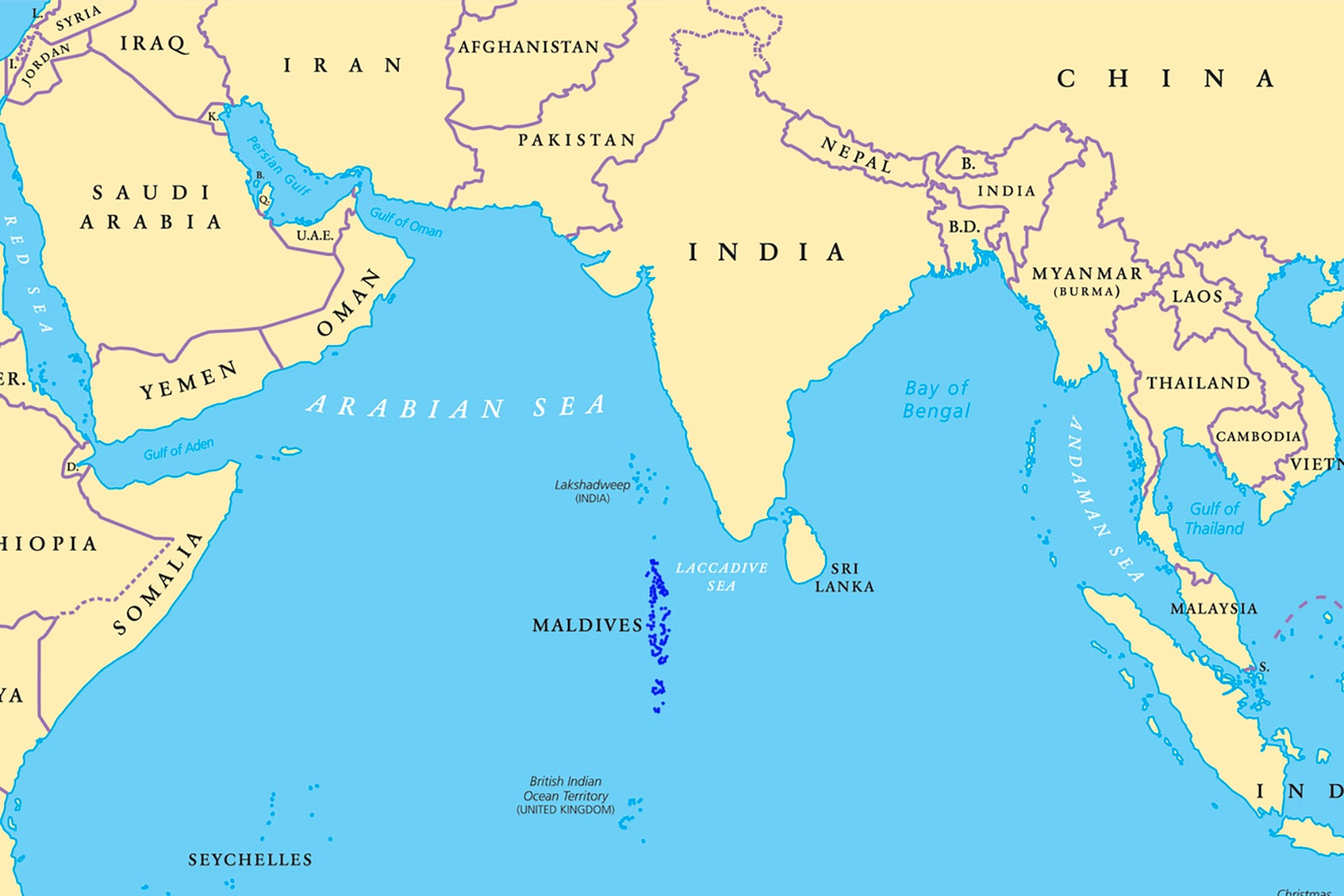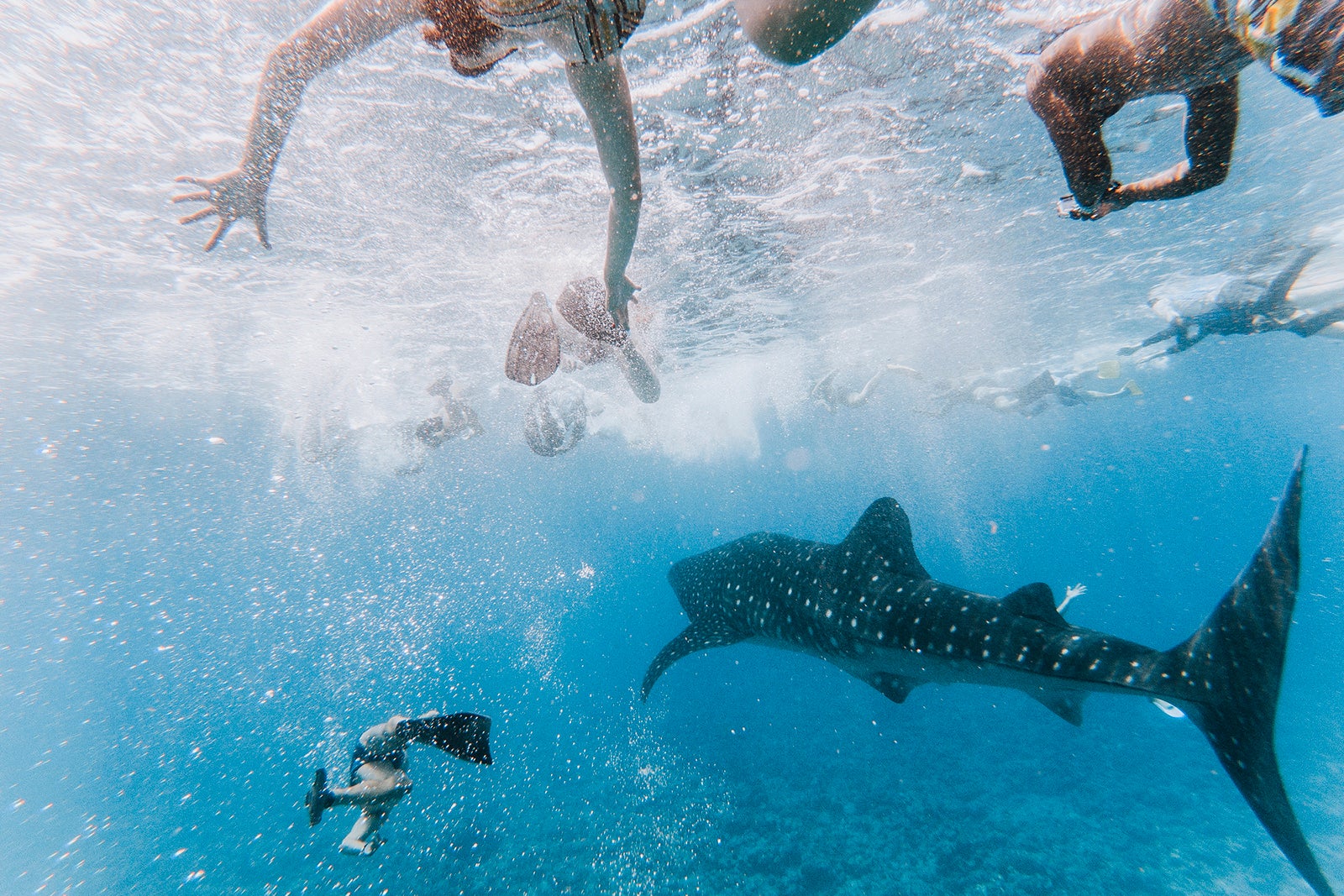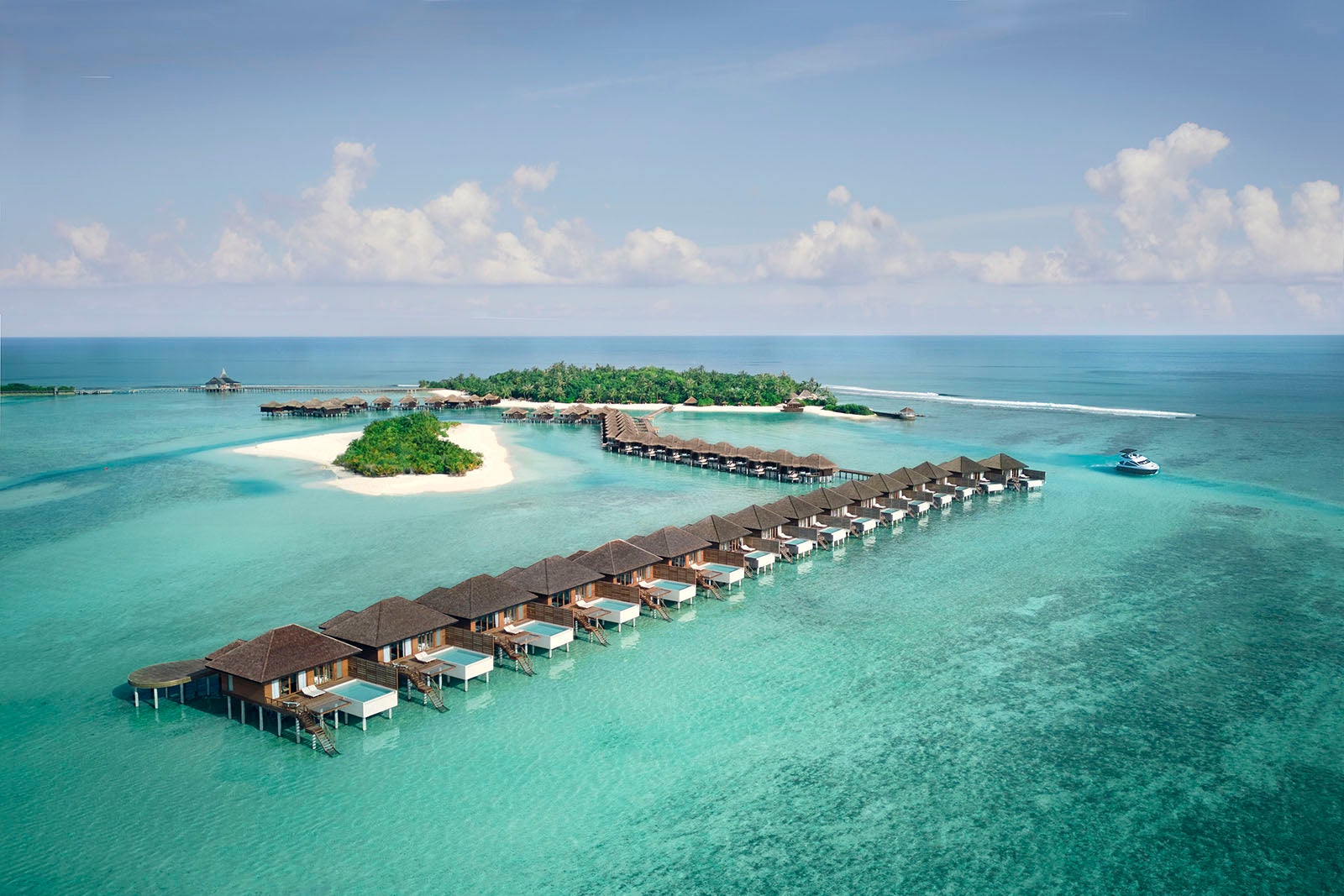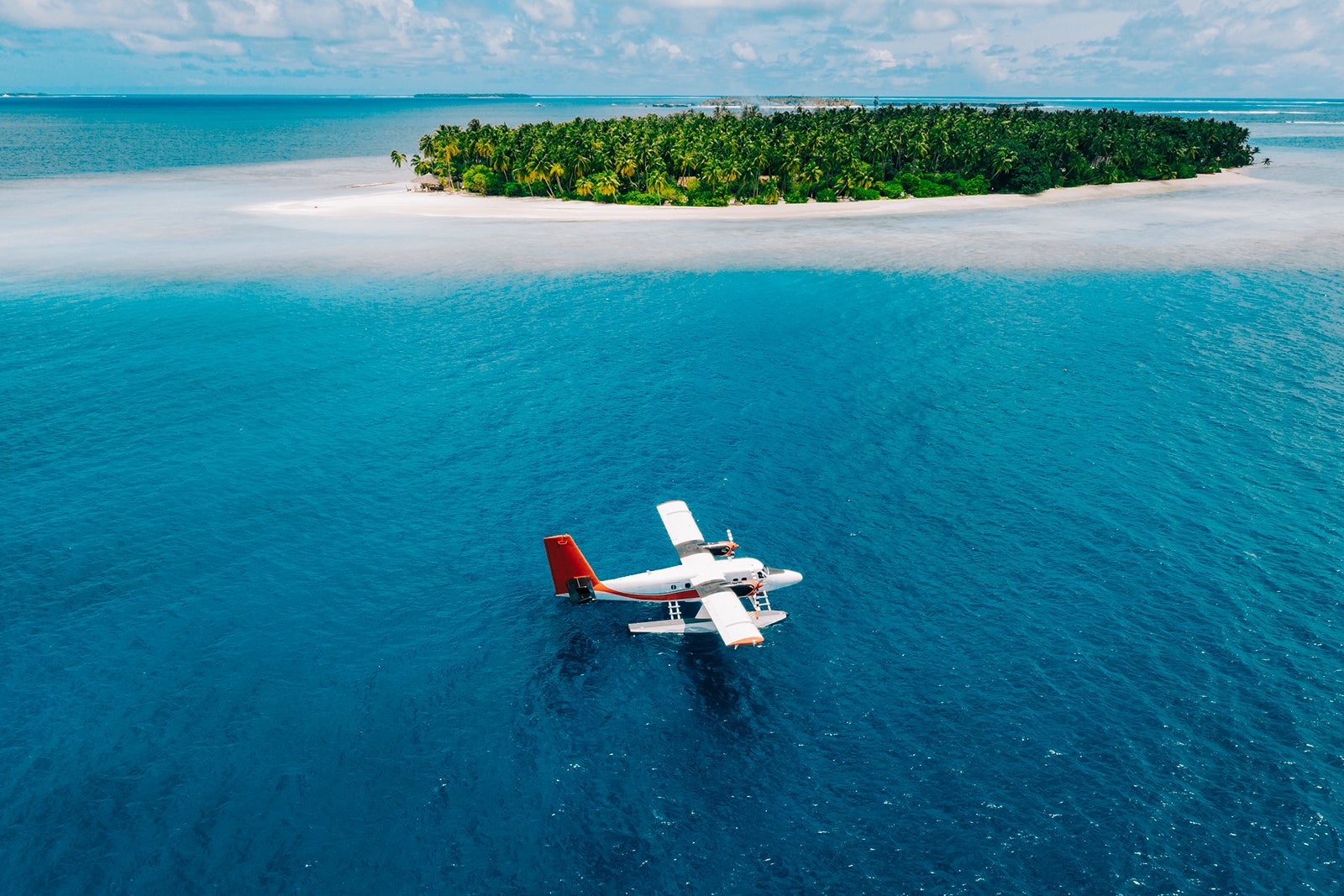If you’re active on Instagram, you’ve likely seen surreal-looking photos capturing the swirling electric blues of the Maldives and its famous overwater villas. You might know someone who’s ventured there on their honeymoon. But what may not be as crystal clear as those Maldivian waters is exactly where the Maldives are located.
Mystery solved: The spectacularly beautiful island nation officially called the Republic of Maldives is part of South Asia and is in the Indian Ocean. It’s nearly 450 miles southwest of the tip of mainland India and is the smallest country in all of Asia. Although it’s made up of more than 1,100 individual coral islands, only a fraction of them are inhabited. Each of its 26 atolls comprises multiple isles and lagoons. The Maldives is the world’s lowest and flattest country, with its highest point less than 8 feet above sea level.
Before you plan a trip to the Maldives, get the 411 on this spectacularly beautiful country, including how to get there, the best time to visit and the latest resort news.
How to get to the Maldives
To reach this island paradise in the middle of the Indian Ocean, you must hop on at least a few flights. From most major U.S. cities, it takes about 24 hours to reach Male’s Velana International Airport (MLE), so flying business class is an excellent and advisable use of saved-up points and miles.
From Los Angeles, Seattle and San Francisco on the West Coast and Atlanta, Boston and New York on the East Coast, there are one-stop options with Singapore Airlines, Emirates and Turkish Airlines, with slightly longer layovers on Qatar Airways.
Remember that many resorts are also a short plane or speedboat ride away from Male, so be sure to factor in that time, too.
The best time to visit the Maldives
Travelers can expect heat year-round, as the Maldives is an equatorial country just a few degrees into the Northern Hemisphere. That said, every month isn’t the same. Weather-wise, the best time to visit the Maldives is during its dry season, which stretches from November to April. High temperatures are in the mid-80s on average (with the ocean almost the same temperature), with less humidity and wind. Peak water clarity and visibility tend to be around March (though it’s pretty exceptional year-round). So, if you dive and snorkel, late in the dry season will be your sweet spot.
There are still benefits to traveling during the monsoon or rainy season, which is from May to October. Between July and October, manta rays congregate in Hanifaru Bay, Baa Atoll. Whale sharks can also gather there to feast on plankton during this time. Surfers should look at February to November for the biggest swells. Beyond that, there may be a decent volume of rain, but it tends to come in bursts and not last all day. Additionally, there are fewer tourists and lower rates during this time of year.
The basics to know before traveling
The official language in the Maldives is Dhivehi or Maldivian, a cousin to Sri Lanka’s Sinhala language. That said, English is widely and well spoken at all resorts and in touristed areas, so you can expect to communicate easily with Maldivian people.

Daily Newsletter
Reward your inbox with the TPG Daily newsletter
Join over 700,000 readers for breaking news, in-depth guides and exclusive deals from TPG’s experts
The local currency is rufiyaa: 100 rufiyaa currently equals $6.50. At resorts, menu and excursion prices are typically listed in dollars, so there’s no fancy math needed. All nationalities receive a 30-day tourist visa on arrival, free of charge.
A few other helpful tidbits: Maldives is a malaria-free destination. It’s predominantly Muslim, which you may not even notice when ensconced in a luxury private island resort. Because of the religion, however, public nudity is strictly prohibited, and visitors should avoid topless sunbathing out of respect.
Also worth noting is that while alcohol is banned for locals, hotels are an exception, and liquor is legally available for purchase and consumption at all the archipelago’s resorts.
The resorts in the Maldives are as epic and gorgeous as they appear on social media
It’s safe to expect your arrival — by small airplane or speedboat — at a resort in the Maldives to feel like stepping into a postcard. The colors are that vivid, the seascapes that stunning, the welcome that warm. While there’s a lot to do, one of the reasons why people go to the Maldives is to dive into the experience of a sublime, supremely luxurious hotel where you’ll feel like a VIP.
There seem to be endless resorts already dotting the powdered sugar islands, including favorites such as Joali Maldives, The St. Regis Maldives Vommuli Resort, Waldorf Astoria Maldives Ithaafushi, Soneva Jani, Six Senses Kanuhura and InterContinental Maldives Maamunagau Resort. There are also some very exciting properties on the horizon.
Hyatt Regency Samarafushi Maldives on the North Male Atoll is expected to open in 2027, with 130 all-pool villas that include treetop designs. The same timing is projected for Rosewood Ranfaru Resort in the South Male Atoll, which will have about 120 villas from one to five bedrooms, some on their own private islands. Baccarat Hotels & Residences Maldives is also slated to open in 2027 in the South Male Atoll, with more than 50 hotel villas and 53 private residences for sale.
While the recently announced Aman Maldives‘ opening is still a question mark (likely 2027), IHG’s Noku Maldives, part of the Vignette Collection, is bookable far sooner. This resort is slated to open this December with 30 overwater villas and 20 beach villas.
Bottom line: Is it worth the journey?
There’s no way around it. Getting to the Maldives is a haul — a long haul. But if radiant sun, white sand, the bluest and cleanest saltwater you can imagine, swaying palms, magnificent megafauna, biodiverse coral reefs, snorkels and sandals, beach cruisers, lots and lots of fresh lobster and tuna, tropical libations and decadent resorts with generous service are your vibe, then yes, the trip is well worth it.
Related reading:




